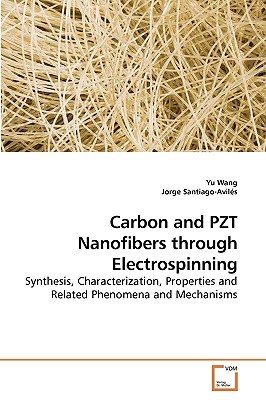
- We will send in 10–14 business days.
- Author: Yu Wang
- Publisher: VDM Verlag
- ISBN-10: 3639230264
- ISBN-13: 9783639230260
- Format: 15.2 x 22.9 x 0.6 cm, minkšti viršeliai
- Language: English
- SAVE -10% with code: EXTRA
Reviews
Description
One-dimensional structures, such as nanofibers, have the smallest dimension for efficient transport of electrons and optical excitations, and can be used in diverse applications such as nano-electronics and photonics as building blocks in bottom-up assembly, which could overcome fundamental limitations of conventional microfabrications based on lithography. Unfortunately, there has not been a well-established technology to fabricate nanofibers. Electrostatic generation or electrospinning, an "old" technology patented in 1934, is promising to fill the blank. The technology has recently been "re-vitalized" to fabricate versatile ultrafine fibers. This book develops a general methodology for fabrication of versatile inorganic fibers based on electrospinning and a couple of specific receipts for fabrication of carbon and lead zirconate titanate nanofibers, characterizes the synthesized nanofibers and their properties, elucidates and models related physical mechanisms, especially the mechanism of electron transport in disordered system in reduced dimension. It should help shed some light on nanotechnology and is of reference value to those in nanotechnology.
EXTRA 10 % discount with code: EXTRA
The promotion ends in 23d.18:27:47
The discount code is valid when purchasing from 10 €. Discounts do not stack.
- Author: Yu Wang
- Publisher: VDM Verlag
- ISBN-10: 3639230264
- ISBN-13: 9783639230260
- Format: 15.2 x 22.9 x 0.6 cm, minkšti viršeliai
- Language: English English
One-dimensional structures, such as nanofibers, have the smallest dimension for efficient transport of electrons and optical excitations, and can be used in diverse applications such as nano-electronics and photonics as building blocks in bottom-up assembly, which could overcome fundamental limitations of conventional microfabrications based on lithography. Unfortunately, there has not been a well-established technology to fabricate nanofibers. Electrostatic generation or electrospinning, an "old" technology patented in 1934, is promising to fill the blank. The technology has recently been "re-vitalized" to fabricate versatile ultrafine fibers. This book develops a general methodology for fabrication of versatile inorganic fibers based on electrospinning and a couple of specific receipts for fabrication of carbon and lead zirconate titanate nanofibers, characterizes the synthesized nanofibers and their properties, elucidates and models related physical mechanisms, especially the mechanism of electron transport in disordered system in reduced dimension. It should help shed some light on nanotechnology and is of reference value to those in nanotechnology.


Reviews